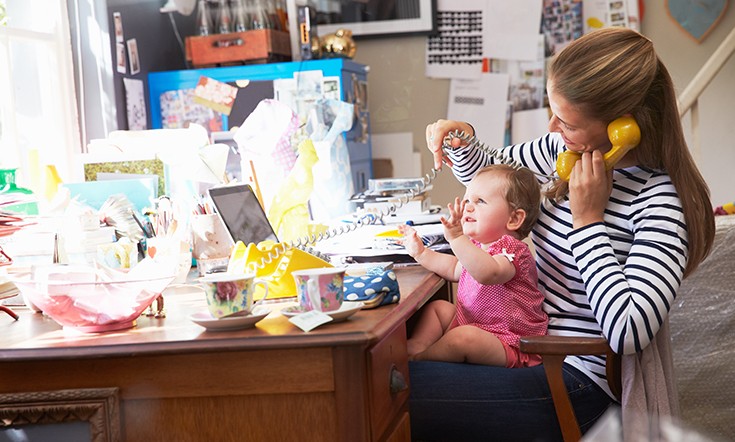

For many women the thought of squeezing back in to your corporate gear, and commuting in to the city all while trying to wrangle a baby into day care can be too much to bear. The rise of the “Mumpreneur’ is one way that many women are trying to strike a balance between being present for their family, and having a professional life outside the home.
[mobile_add addrotate_number="72"]For many mothers of young children, the benefits of working from home far outweigh the struggles of negotiating flexible work arrangements, finding childcare, trying to do a full time role in three days or trying to hold on to your hard-earned and challenging position that you had before you had your baby. Setting up a business at home cancels all this out.
You can work when you want to work, manage your workload around your family and still earn a living. You can opt for a complete career change, as many careers just aren’t compatible with family life.
Working From Home? Here are a few options you could consider:
- Virtual Assistant – there is a substantial market for Virtual Assistants, especially among small business owners. It is often more cost-effective to hire a Virtual Assistant to help out with admin rather than employing someone full time in the office. Most administration duties can be done online so if you’ve got administration experience, it’s worth considering.
- Writing – setting up as a Freelance Writer is an option if you write well and have an understanding about different types of business communications. Small businesses often seek writers to write blog posts, website content or proof read.
- Tutoring – if you have experience in teaching you could offer private tutoring in whatever your specialist subject is.
- Social Media Management – if you understand the difference between using social media for personal use and using it for business then the opportunities are endless as more businesses realise that it’s one of the most important marketing tools for their business.
- Design – if you’re creative and have experience in, and access to, desktop publishing programs then designing logos, flyers or websites is ideal work to do from home.
- Translation – if you’re fortunate enough to speak another language you could provide a translating service to a wide range of industries.
These are just the tip of the iceberg – the opportunities are endless, but there are other things to consider outside the ‘work-life-balance’ quest.
It can take time to build up a client-base so it may take several months (or more) before you earn any money. It is also likely you will earn less as a salaried employee, and you need to keep in mind that there is no paid holiday or sick leave – if you don’t work, you don’t get paid.
Superannuation is also a consideration as many people who work for themselves don’t contribute to their Super, simply because they can’t afford to.
Research has shown that employers perceive time spent as ‘self-employed’ the same way as they perceive periods of unemployment, so it’s not looked on favourably by potential employers.
Re-entering the workforce after a period of being self-employed often resulted in women being paid less than other employees, relative to the amount of experience they had.
So there are pros and cons to both, but working for yourself can be a great option if you are torn between having a career and spending more time at home.























